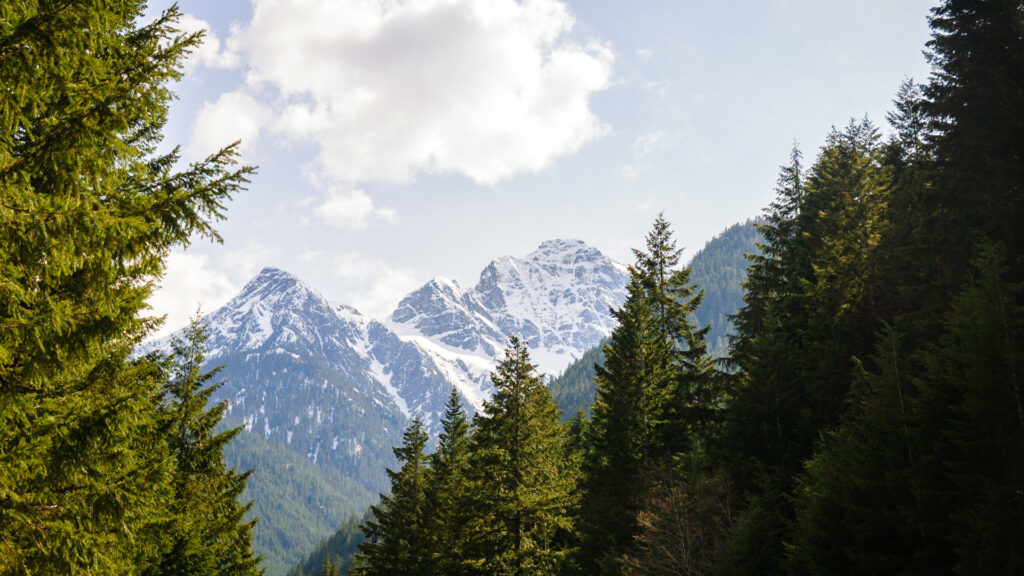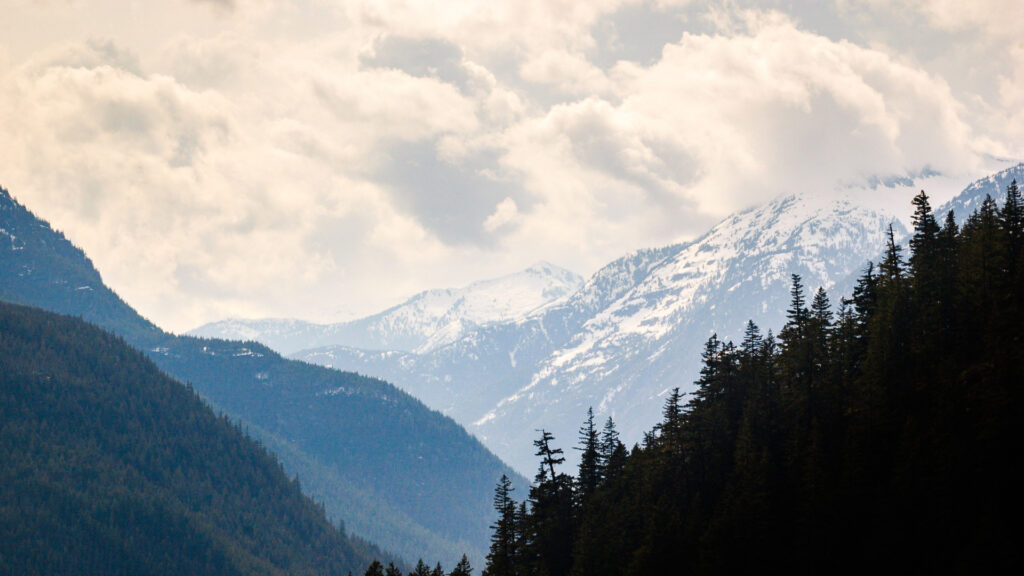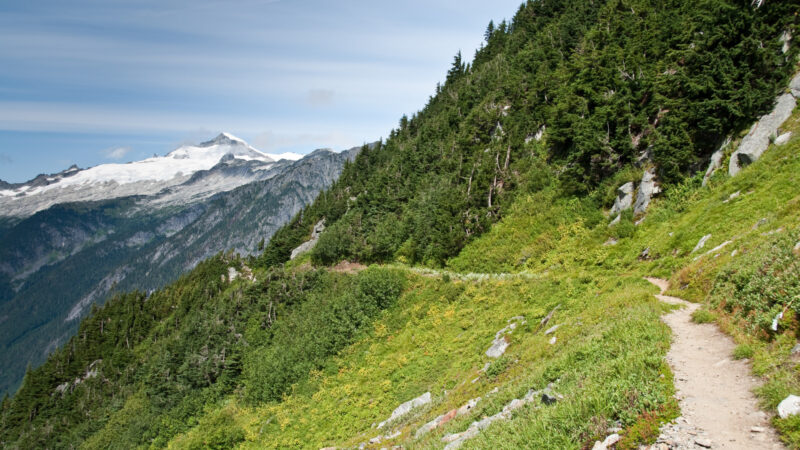Table of Contents Show
When you think about the most dangerous national park in the country, you might imagine the Grand Canyon with its towering cliffs or Denali with its high peaks and bitter cold. But the national park with the highest death rate isn’t either one of these.
It’s a park you might have never even heard of, as it only saw 30,154 visitors in 2022. North Cascades National Park in Washington is one of the least-visited parks in the country and yet still has the highest death rate of all 63.
Let’s learn more about what’s going on in northeastern Washington.
How Many National Parks Are in the US?
The United States has 63 national parks. These are the largest units and exist from Alaska to Florida, with dozens of parks in between.
The most visited is the Great Smoky Mountains National Park along the Tennessee-North Carolina border. It welcomed 12.9 million visitors in 2022.
Other top National Parks in terms of attendance include Grand Canyon and Zion National Parks, with 4.7 million visitors each, and Rocky Mountain National Park, with 4.3 million visitors. Acadia National Park came in fifth with 4 million visitors in 2022.
This starkly contrasts the 30,000 visitors at North Cascades National Park. Other least-visited parks include several Alaskan parks like Kobuk Valley National Park, Lake Clark National Park and Preserve, and Wrangell-St. Elias National Park.
Isle Royale National Park in Michigan also sees fewer visitors, with only 25,844 visitors in 2021.
Are Visiting National Parks Dangerous?
There’s nothing inherently dangerous about visiting these national treasures. However, some national parks have immense wilderness areas, far from help or modern conveniences.
Others have rocky cliffs and dangerous wildlife that can pose threats. Each park has its own risks.
But as long as visitors adhere to posted signs and warnings, follow guidelines established by the National Park Service, and use common sense, traveling to these 63 locations is just as safe as spending a week at the beach for a family vacation.
Where Is North Cascades National Park?
North Cascades National Park lies in northwestern Washington near the Canadian border. Highway 20 runs through the park, but very few other roads do, making this a remote location.
The limited highway access is one of the reasons it’s one of the least-visited national parks in the country. It lies about 2 hours northeast of Seattle and 2.5 hours southeast of Vancouver, Canada.

About North Cascades National Park
The alpine landscape of North Cascades National Park is unique to the lower 48. The jagged peaks have more than 300 glaciers. It’s a place of serenity where water cascades into the forested valleys.
More than 500 lakes and ponds dot the mountain ranges. Additionally, over 1,600 plant species reside in this diverse wonderland.
Mountain goats, bighorn sheep, moose, elk, mountain lions, wolverines, black bears, grizzly bears, and river otters all call this place home. Dozens of other birds, small mammals, and reptiles also live here.
You’ll see few structures and roads within North Cascades National Park since it’s almost entirely protected as wilderness. Camping is regulated by a permit system and requires hiking, horseback riding, or boating to reach designated campsites.
Keep in Mind: Is Gerber’s “RV Industry Death Spiral” Prediction Coming True? Click the link to find out!
Why Does North Cascades National Park Have the Highest Death Rate?
Because of the large amount of snow and towering mountain peaks, avalanches are common in North Cascades National Park. This is another reason why the park isn’t visited heavily.
The winter season sees very few guests. But this also poses a risk for hikers and climbers who visit during the cold, snowy months.
However, climate change is also affecting the snowmelt. Snowfields are looser, prompting more rockfall and icefall. These giant blocks of rock and ice can easily send a hiker or climber tumbling to their death.
From 2007 to 2021, the park had 3.7 deaths per 100,000 visitors. During those 15 years, 14 people died in North Cascades National Park. This may not seem like a lot (less than one a year), but it’s concerning when the park sees less than 20,000 people annually.
Other parks have higher death tolls. For example, more people die in Death Valley National Park due to heat exhaustion and other factors. But the park also saw 1.1 million visitors in 2022.
Although the causes of death weren’t listed in the federal report, park rangers in Washington explain that climbers and hikers were the visitors most often rescued or found deceased.
Falling ice and rock is common, and unfortunately, due to the nature of alpine climbing, plunging from the mountains also causes these deaths.
What Changes Do Climbers Want to See at North Cascades National Park?
Many climbers believe park officials can do more to make North Cascades National Park safer. One of the suggestions is to allow limited use of bolted anchors — devices climbers use to help tether them to mountains.
These anchors are the safest and sturdiest equipment climbers can use to protect themselves from falling. But not everyone agrees with the use of these bolted anchors.
Some oppose them because they permanently alter the landscape. Park officials fiercely protect the wilderness area of North Cascades National Park and only allow traditional climbing methods that leave no trace.
Keep in Mind: Have you heard stories of Feral People living in National Parks? See why so many believe these rumors!
What Other National Parks Have High Death Rates?
Wrangell-St. Elias National Park in Alaska was second on the list, with 1.09 deaths per 100,000 visitors. Sequoia and Kings Canyon National Parks in California tied for third, with 0.99 deaths per 100,000 visitors.
Finally, Alaska’s Denali National Park was also near the top of the list, with 0.93 deaths per 100,000 visitors.
A study on the most dangerous national parks found that over 12 years, U.S. national park sites had a total of 2,727 deaths.
It further stated that “Drowning (668 deaths) is the Leading Cause of Death at national parks and national recreation areas. Drowning is followed by motor vehicle crashes (475 deaths), falls and slips (335), natural causes (285), and suicide (260).”
The study also found that despite the amount of wildlife throughout all the parks, only eight people over the 12 years had died from wild animals.

Will There Be Changes to Ensure Visitor Safety?
This is the question at hand for park officials. Do they stick to protecting the natural landscape of North Cascades National Park, or will they do more to protect climbers and hikers on the most popular routes?
Some continue to argue the many pros and cons of allowing the proposed bolted anchors. Only time will tell if park officials change their stance.
Do you think the bolted anchors should be allowed in this rugged wilderness?






